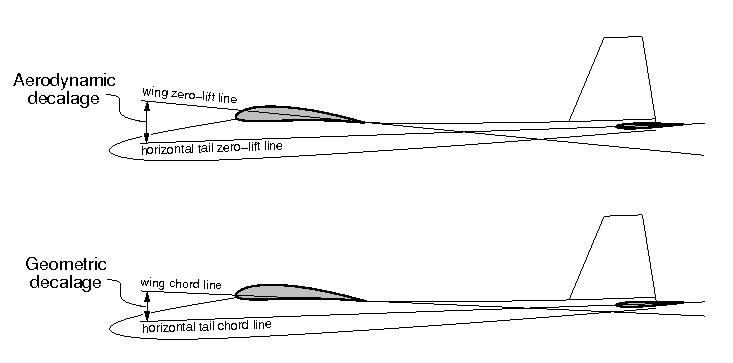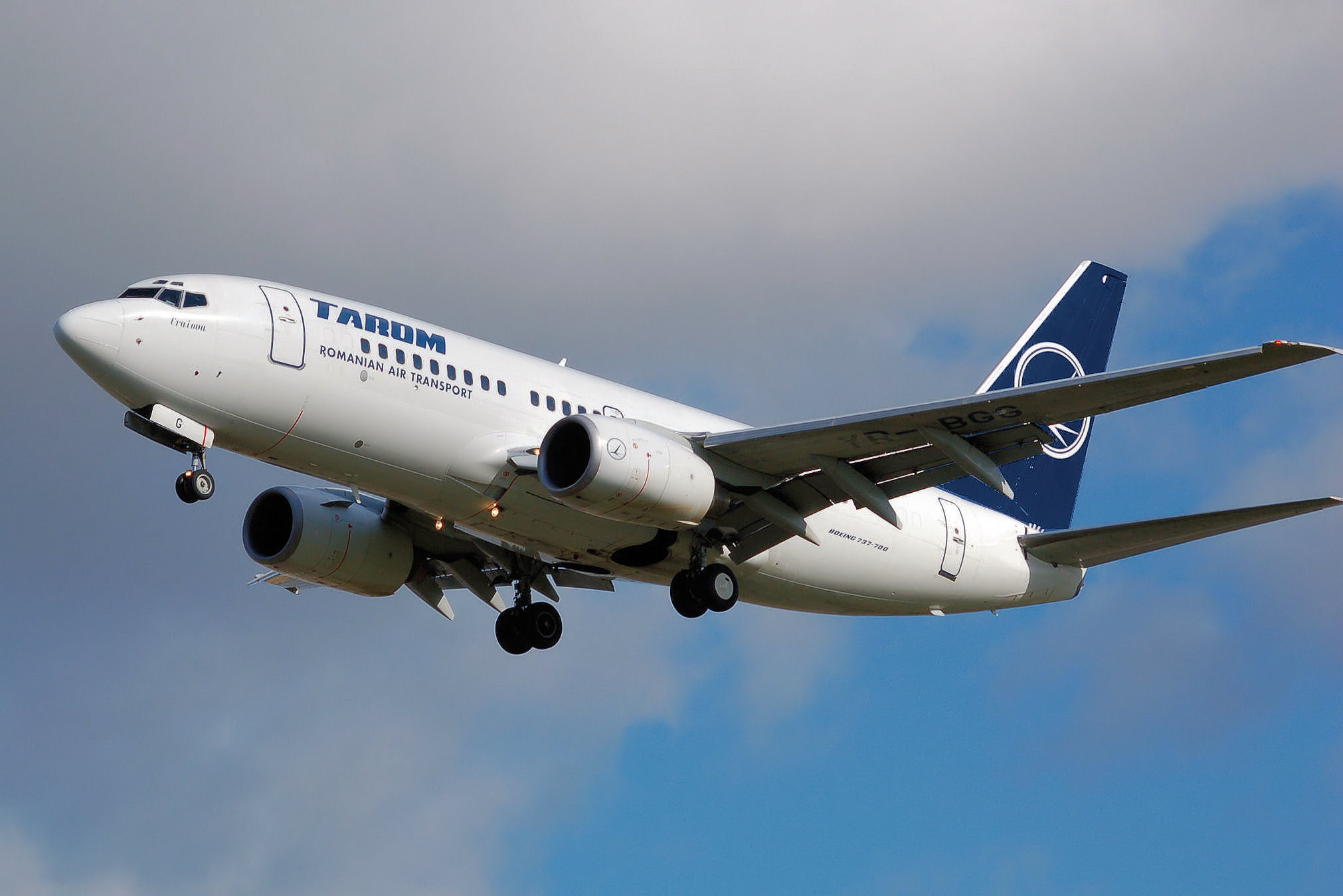|
Decalage
Decalage on a fixed-wing aircraft is the angle difference between the upper and lower wings of a biplane, i.e. the acute angle contained between the chords of the wings in question. Decalage is said to be positive when the upper wing has a higher angle of incidence than the lower wing, and negative when the lower wing's incidence is greater than that of the upper wing. Positive decalage results in greater lift from the upper wing than the lower wing, the difference increasing with the amount of decalage. In survey of representative biplanes real-life design decalage is typically zero, with both wings having equal incidence. A notable exception is the Stearman PT-17, which has 4° of incidence in the lower wing, and 3° in the upper wing. Considered from an aerodynamic perspective, it is desirable to have the forward-most wing stall first, which will induce a pitch-down moment, aiding in stall recovery. Biplane designers may use incidence to control stalling behavior, but may a ... [...More Info...] [...Related Items...] OR: [Wikipedia] [Google] [Baidu] |
Fixed-wing Aircraft
A fixed-wing aircraft is a heavier-than-air Aircraft, flying machine, such as an airplane, which is capable of flight using wings that generate Lift (force), lift caused by the aircraft's forward airspeed and the wing configuration, shape of the wings. Fixed-wing aircraft are distinct from rotorcraft, rotary-wing aircraft (in which the wings form a Helicopter rotor, rotor mounted on a spinning shaft or "mast"), and ornithopters (in which the wings bird flight#Flapping flight, flap in a manner similar to that of a bird). The wings of a fixed-wing aircraft are not necessarily rigid; kites, hang gliders, variable-sweep wing aircraft and airplanes that use wing morphing are all examples of fixed-wing aircraft. Gliding flight, Gliding fixed-wing aircraft, including free-flying Glider (aircraft), gliders of various kinds and tethered kites, can use moving air to gain altitude. Powered aircraft, Powered fixed-wing aircraft (airplanes) that gain forward thrust from an aircraft engine, ... [...More Info...] [...Related Items...] OR: [Wikipedia] [Google] [Baidu] |
Biplane
A biplane is a fixed-wing aircraft with two main wings stacked one above the other. The first powered, controlled aeroplane to fly, the Wright Flyer, used a biplane wing arrangement, as did many aircraft in the early years of aviation. While a biplane wing structure has a structural advantage over a monoplane, it produces more drag than a monoplane wing. Improved structural techniques, better materials and higher speeds made the biplane configuration obsolete for most purposes by the late 1930s. Biplanes offer several advantages over conventional cantilever monoplane designs: they permit lighter wing structures, low wing loading and smaller span for a given wing area. However, interference between the airflow over each wing increases drag substantially, and biplanes generally need extensive bracing, which causes additional drag. Biplanes are distinguished from tandem wing arrangements, where the wings are placed forward and aft, instead of above and below. The term is al ... [...More Info...] [...Related Items...] OR: [Wikipedia] [Google] [Baidu] |
Chord (aircraft)
In aeronautics, the chord is an imaginary straight line joining the leading edge and trailing edge of an aerofoil. The chord length is the distance between the trailing edge and the point where the chord intersects the leading edge. L. J. Clancy (1975), ''Aerodynamics'', Section 5.2, Pitman Publishing Limited, London. The point on the leading edge used to define the chord may be the surface point of minimum radius. p.18 For a turbine aerofoil the chord may be defined by the line between points where the front and rear of a 2-dimensional blade section would touch a flat surface when laid convex-side up. The wing, horizontal stabilizer, vertical stabilizer and propeller/rotor blades of an aircraft are all based on aerofoil sections, and the term ''chord'' or ''chord length'' is also used to describe their width. The chord of a wing, stabilizer and propeller is determined by measuring the distance between leading and trailing edges in the direction of the airflow. (If a ... [...More Info...] [...Related Items...] OR: [Wikipedia] [Google] [Baidu] |
Angle Of Incidence (aerodynamics)
On fixed-wing aircraft, the angle of incidence (sometimes referred to as the ''mounting angle'' or ''setting angle'') is the angle between the chord line of the wing where the wing is mounted to the fuselage, and a reference axis along the fuselage (often the direction of minimum drag, or where applicable, the longitudinal axis). The angle of incidence is fixed in the design of the aircraft, and with rare exceptions, cannot be varied in flight. The term can also be applied to horizontal surfaces in general (such as canards or horizontal stabilizers) for the angle they make relative the longitudinal axis of the fuselage. The figure to the right shows a side view of an airplane. The extended chord line of the wing root (red line) makes an angle with the longitudinal axis (roll axis) of the aircraft (blue line). Wings are typically mounted at a small positive angle of incidence, to allow the fuselage to have a low angle with the airflow in cruising flight. Angles of incidence o ... [...More Info...] [...Related Items...] OR: [Wikipedia] [Google] [Baidu] |


.jpg)